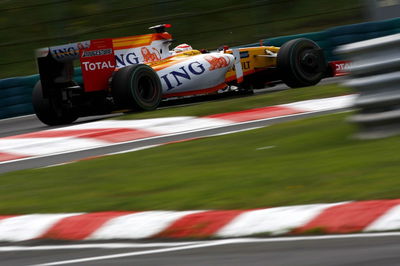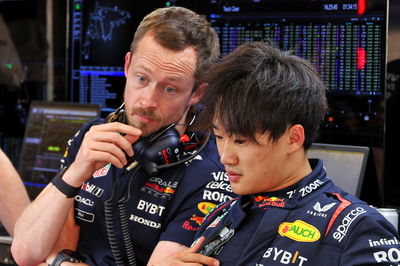Renault returns to KERS.
Renault has revealed that it will resurrect its KERS technology for this weekend's visit to the flat-out pistes of Monza, hoping to boost fortunes that took a blow with a double retirement at the Belgian Grand Prix two weekends ago.
Along with BMW Sauber, The regie dropped the costly energy recovery system after the Spanish Grand Prix when it failed to provide the anticipated advantage at the start of the season, but will rejoin the persevering Ferrari and McLaren - both of which have won races with KERS - in running the technology at the final European race of the year.

Renault has revealed that it will resurrect its KERS technology for this weekend's visit to the flat-out pistes of Monza, hoping to boost fortunes that took a blow with a double retirement at the Belgian Grand Prix two weekends ago.
Along with BMW Sauber, The regie dropped the costly energy recovery system after the Spanish Grand Prix when it failed to provide the anticipated advantage at the start of the season, but will rejoin the persevering Ferrari and McLaren - both of which have won races with KERS - in running the technology at the final European race of the year.
Despite the introduction of chicanes since the circuit's slipstreaming heyday, Monza retains some of the fastest stretches of track seen on the F1 schedule, and Renault director of engineering Pat Symonds insists that there are advantages to be had by running KERS there.
"There are three aspects of KERS that need to be considered - lap time, the advantage it gives from the start, and the ability to assist overtaking," he pointed out, "Firstly, the gain in lap time of running KERS at Monza is likely to be around a quarter of a second, and it's worth even more in qualifying as you can do one release before you start a timed lap and another release during the timed lap.
"In terms of the advantage at the start, it's a long way from the grid to the first corner in Monza and KERS will give an advantage of well over 15 metres compared with non-KERS cars. For assisting overtaking, you have to remember that Monza is a circuit where it's very difficult to overtake, but running KERS certainly won't disadvantage us in that respect. All these factors combine to make Monza a very favourable circuit for KERS."
Despite having accrued on 16 points in twelve races so far this season - and replaced Nelson Piquet Jr with GP2 frontrunner Romain Grosjean alongside Fernando Alonso - Symonds is confident that Renault can produce better results before the end of the season, with Monza earmarked as particularly favourable to R29.
"The car should perform well there," Symonds insisted, "We will use a totally different low downforce aero package, which has between 10-15 per cent less downforce than the package we ran at Spa. Monza is very much about braking, traction, change of direction in chicanes... and, although it's a high-speed track, there are no real high-speed corners. Overall, I think that the R29 is performing well on all types of track and Monza should be no exception.
"The Belgian Grand Prix was one of the most puzzling races I've been to for a long time, and it was very odd to see a grid that was so mixed up. However, we tried to make the most of it and, although it was unfortunate to lose Romain so early in the race, Fernando had the potential to have a good run and looked strong in the early laps. He was fuelled for a long first stint and the car seemed to be working well, despite the damage that had occurred on the first lap, which had reduced the car's downforce. Unfortunately, at the first pit-stop, we realised the car was damaged and Fernando had to retire.
"I don't see why [we can't turn things around in the final five races]. The car has continuously improved, as it did last year. It hasn't achieved the results for a number of reasons this year, but the team is competitive, the drivers are motivated and the car continues to improve so I believe we can perform well in the last five races."










